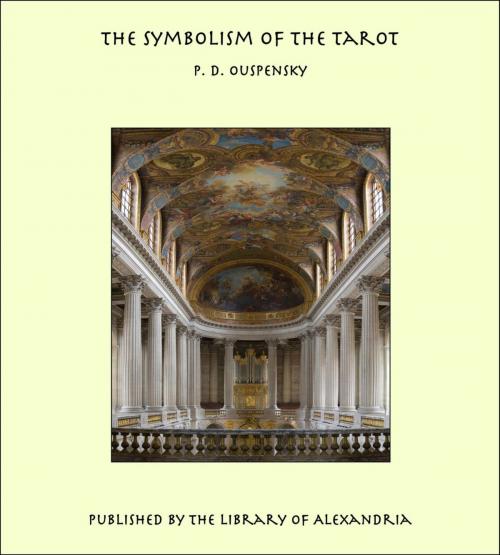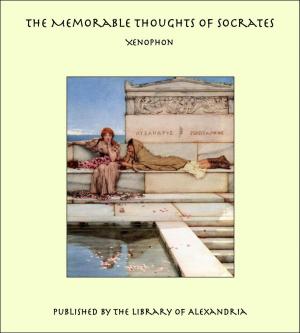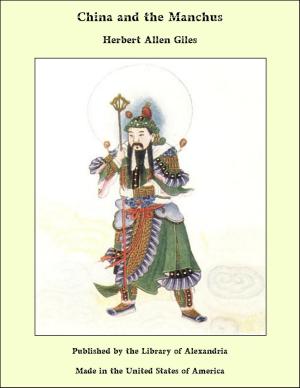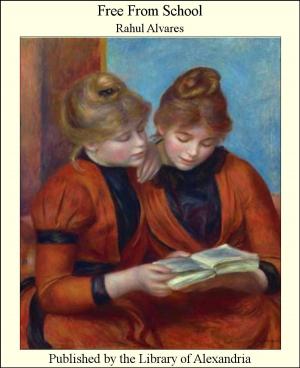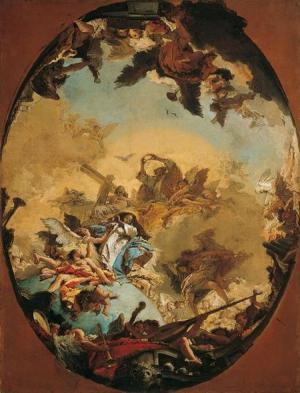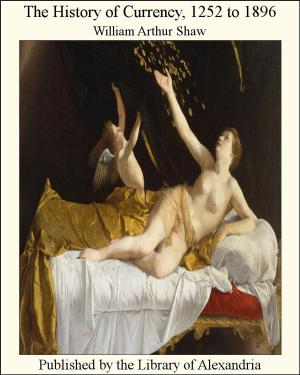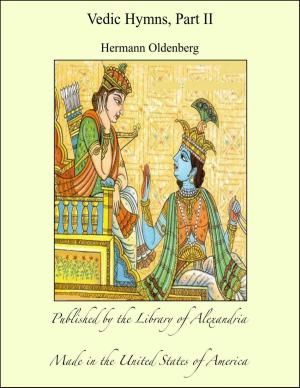The Symbolism of The Tarot
Nonfiction, Religion & Spirituality, New Age, History, Fiction & Literature| Author: | P. D. Ouspensky | ISBN: | 9781465505880 |
| Publisher: | Library of Alexandria | Publication: | July 29, 2009 |
| Imprint: | Library of Alexandria | Language: | English |
| Author: | P. D. Ouspensky |
| ISBN: | 9781465505880 |
| Publisher: | Library of Alexandria |
| Publication: | July 29, 2009 |
| Imprint: | Library of Alexandria |
| Language: | English |
No study of occult philosophy is possible without an acquaintance with symbolism, for if the words occultism and symbolism are correctly used, they mean almost one and the same thing. Symbolism cannot be learned as one learns to build bridges or speak a foreign language, and for the interpretation of symbols a special cast of mind is necessary; in addition to knowledge, special faculties, the power of creative thought and a developed imagination are required. One who understands the use of symbolism in the arts, knows, in a general way, what is meant by occult symbolism. But even then a special training of the mind is necessary, in order to comprehend the language of the Initiates, and to express in this language the intuitions as they arise. There are many methods for developing the sense of symbols in those who are striving to understand the hidden forces of Nature and Man, and for teaching the fundamental principles as well as the elements of the esoteric language. The most synthetic, and one of the most interesting of these methods, is the Tarot In its exterior form the Tarot is a pack of cards used in the south of Europe for games and fortune-telling. These cards were first known in Europe at the end of the fourteenth century, when they were in use among the Spanish gypsies. A pack of Tarot contains the fifty-two ordinary playing cards with the addition of one picture card to every suit, namely, the Knight, placed between the Queen and the Knave. These fifty-six cards are divided into four suits, two black and two red and have the following designation: sceptres (clubs), cups (hearts), swords (spades), and pentacles or disks (diamonds).
No study of occult philosophy is possible without an acquaintance with symbolism, for if the words occultism and symbolism are correctly used, they mean almost one and the same thing. Symbolism cannot be learned as one learns to build bridges or speak a foreign language, and for the interpretation of symbols a special cast of mind is necessary; in addition to knowledge, special faculties, the power of creative thought and a developed imagination are required. One who understands the use of symbolism in the arts, knows, in a general way, what is meant by occult symbolism. But even then a special training of the mind is necessary, in order to comprehend the language of the Initiates, and to express in this language the intuitions as they arise. There are many methods for developing the sense of symbols in those who are striving to understand the hidden forces of Nature and Man, and for teaching the fundamental principles as well as the elements of the esoteric language. The most synthetic, and one of the most interesting of these methods, is the Tarot In its exterior form the Tarot is a pack of cards used in the south of Europe for games and fortune-telling. These cards were first known in Europe at the end of the fourteenth century, when they were in use among the Spanish gypsies. A pack of Tarot contains the fifty-two ordinary playing cards with the addition of one picture card to every suit, namely, the Knight, placed between the Queen and the Knave. These fifty-six cards are divided into four suits, two black and two red and have the following designation: sceptres (clubs), cups (hearts), swords (spades), and pentacles or disks (diamonds).
